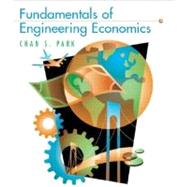
Note: Supplemental materials are not guaranteed with Rental or Used book purchases.
Purchase Benefits
What is included with this book?
| Understanding Money and its Management | |
| Engineering Economic Decisions | |
| Financial Mathematics | |
| Understanding Money Management | |
| Managing Money under Inflation | |
| Evaluating Business and Engineering Assets | |
| Present Worth Analysis | |
| Annual Equivalence Analysis | |
| Rate of Return Analysis | |
| Development of Project Cash Flows | |
| Accounting for Depreciation and Income Taxes | |
| Project Cash Flow Analysis | |
| Handling Project Uncertainty | |
| Special Topics in Engineering Economics | |
| Replacement Decisions | |
| Benefit-Cost Analysis | |
| Understanding Financial Statements | |
| Useful Excel Commands for Economic Analysis | |
| Interest Tables (Discrete Compounding) | |
| Answers for Selected Problems | |
| Table of Contents provided by Publisher. All Rights Reserved. |
The New copy of this book will include any supplemental materials advertised. Please check the title of the book to determine if it should include any access cards, study guides, lab manuals, CDs, etc.
The Used, Rental and eBook copies of this book are not guaranteed to include any supplemental materials. Typically, only the book itself is included. This is true even if the title states it includes any access cards, study guides, lab manuals, CDs, etc.